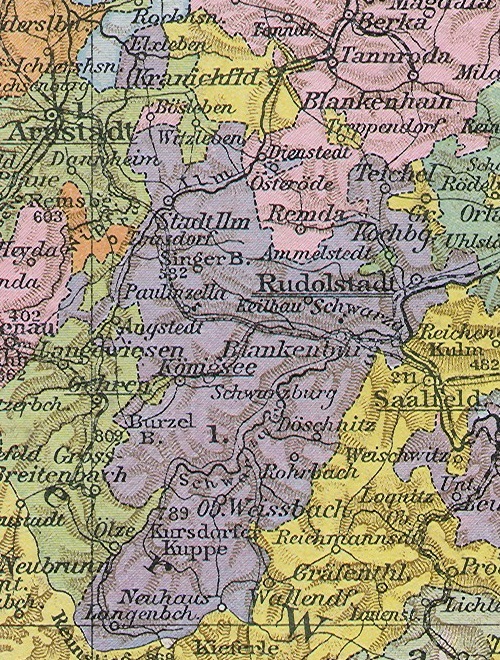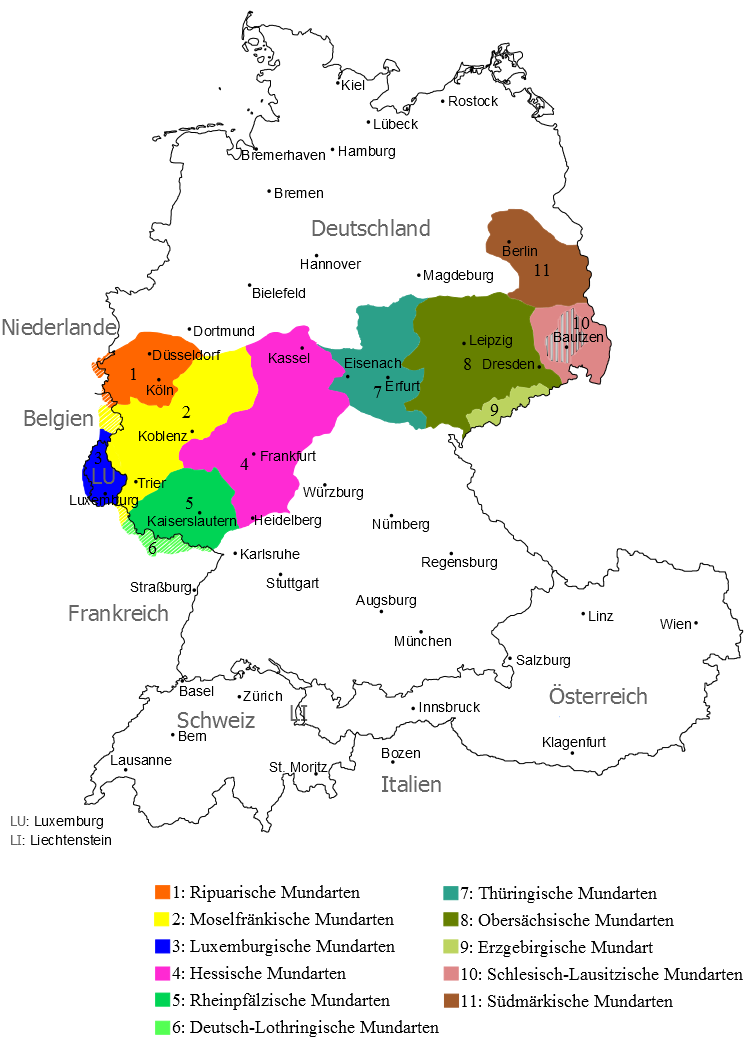The Thuringian dialect is spoken in much of the modern State of Thuringia north of the Rennsteig ridge, southwestern Saxony-Anhalt and adjacent territories of Hesse and Bavaria. It is close to the dialect spoken mainly in the state of Saxony, that was that was also spoken in Silesia and Bohemia.
This dialect emerged as settlers from Franconia, Bavaria, Saxony, and Flanders settled in the areas east of the Saale River, and the capital of the empire moved from the Palace of Aachen built by Charlemagne to Prague and later Vienna.
The Thuringian dialect is characterized by a rounding of the vowels, the weakening of consonants of Standard German (the lenition of the consonants “p,” “t,” and “k”), a marked difference in the pronunciation of the “g” sound, and a highly idiosyncratic, melodic intonation of sentences. The second German consonant shift manifested itself in a manner different from that which occurred elsewhere in the areas that spoke High German. In many words, “b” is pronounced as “w,” “v, or “f” would be in Standard German. For example, the word “aber” (but) is pronounced as “awer.”

